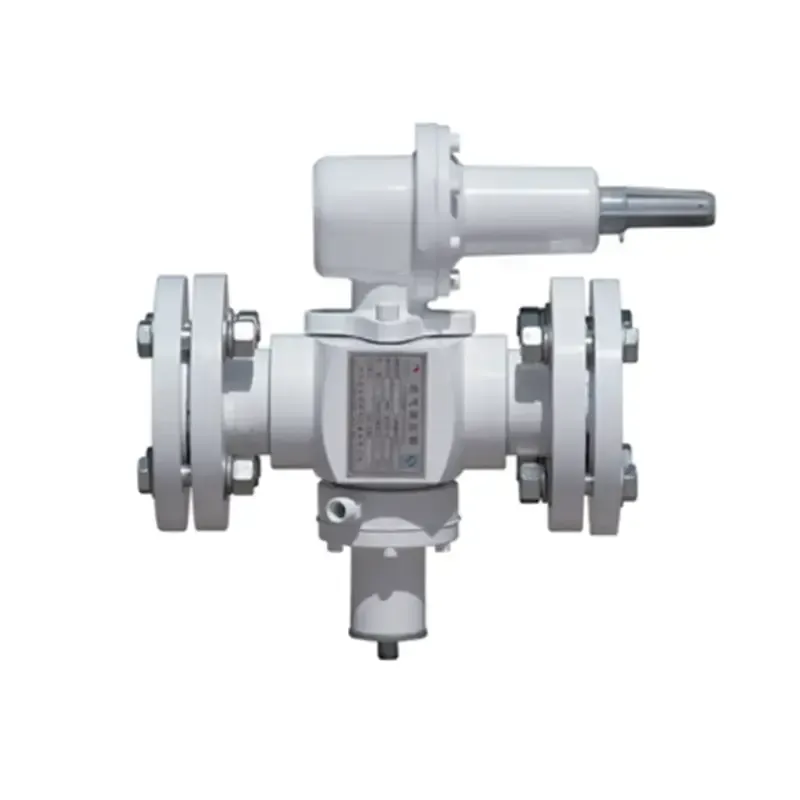
Dec . 11, 2024 10:20
Back to list
Pressure Regulator Design and Applications for Efficient Fluid Control Systems
Understanding Pressure Regulators Function and Importance
Pressure regulators, integral components in various systems, play a crucial role in maintaining safe and efficient operation across multiple industries, including gas distribution, water supply, and industrial manufacturing. A pressure regulator is designed to automatically control and reduce the pressure of fluid or gas in a system to a desired level, preventing potential hazards while ensuring optimal performance.
The fundamental working principle of a pressure regulator involves the use of a diaphragm or a piston that reacts to changes in downstream pressure. When the downstream pressure rises above the setpoint, the diaphragm moves to reduce the flow of the incoming fluid or gas, thereby lowering the pressure. Conversely, if the downstream pressure drops, the diaphragm allows more fluid or gas to flow into the system. This feedback mechanism ensures that the pressure remains within a specified range, contributing to the overall stability of the operation.
.
In addition to safety, pressure regulators enhance the efficiency of systems. For instance, in gas supply networks, maintaining a consistent pressure can optimize combustion processes, leading to better energy efficiency and reduced emissions. Similarly, in industrial machinery, stable pressure levels contribute to consistent performance and prolonged equipment life by preventing wear and tear caused by pressure fluctuations.
منظم الضغط

Moreover, pressure regulators find applications across various sectors, including healthcare, aviation, and food processing. In the medical field, they are used to control the delivery of gases such as oxygen to patients, ensuring that they receive the appropriate levels for their treatment. In the aviation industry, regulators are crucial for the operation of fuel systems, where consistent pressure is vital for engine performance. In food processing, they help maintain proper pressure in pipelines, ensuring product quality and safety.
There are several types of pressure regulators, each tailored for specific applications. For example, low-pressure regulators are commonly used in residential gas supply systems, while high-pressure regulators are essential in industrial applications. Additionally, there are back-pressure regulators, which are used to maintain upstream pressure levels, ensuring that processes occur at the desired conditions.
The technology behind pressure regulators has also evolved significantly over the years. Modern regulators may incorporate electronic controls and advanced sensors that provide real-time monitoring and adjustment capabilities. This innovation allows for better accuracy and responsiveness, further enhancing the reliability of the systems in which they are employed.
In summary, pressure regulators are vital components that ensure safety, efficiency, and reliability in various applications. Their ability to maintain optimal pressure levels is essential for preventing hazards and enhancing the performance of systems across multiple industries. As technology continues to advance, the role of pressure regulators will only become more significant, paving the way for safer and more efficient operations globally. Understanding their function and importance underscores the need for regular maintenance and proper selection to meet specific operational requirements, ultimately contributing to sustainability and safety in our industrial practices.
Latest news
-
Safety Valve Spring-Loaded Design Overpressure ProtectionNewsJul.25,2025
-
Precision Voltage Regulator AC5 Accuracy Grade PerformanceNewsJul.25,2025
-
Natural Gas Pressure Regulating Skid Industrial Pipeline ApplicationsNewsJul.25,2025
-
Natural Gas Filter Stainless Steel Mesh Element DesignNewsJul.25,2025
-
Gas Pressure Regulator Valve Direct-Acting Spring-Loaded DesignNewsJul.25,2025
-
Decompression Equipment Multi-Stage Heat Exchange System DesignNewsJul.25,2025

